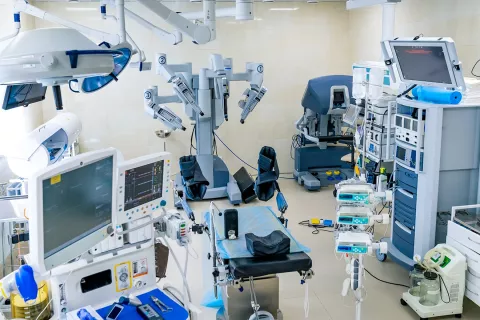
Risk management is an essential process for medical devices to ensure their safety and effectiveness. Medical device manufacturers must have established risk management processes to combat and reduce the risks, by performing thorough risk evaluations. Though there is no sufficient real-world data to accurately quantify risks, there are effective and systematic steps, which can be established by the manufacturers, to analyze, evaluate, control, and mitigate risks. Let us understand what these steps are and how will they aid in medical devices risk management.
Devise a Risk Management Framework & Plan: Start by creating a risk management plan for every device. Define any risk management framework that is compliant with global standards like ISO14971. Know more about the high-level ISO 14971 Medical Device Risk Management Standards here. The framework must include all the details of a device, including, intended use, risk analysis, risk evaluation, risk control, review, reporting and documentation. Alongside it is necessary to document the roles and responsibilities of people involved in the device development project, risk acceptability criteria, risk control verification activities, risk review requirements and the production and post-production activities.
Perform Risk Analysis: The starting point to outline any risk is to perform risk analysis, which can be defined as a systematic use of the available information to identify hazards and estimate the risk. The risk analysis must showcase the scope of the device, its intended use, identify potential hazards and hazardous situations. Once the hazards and hazardous situations are identified, they must be documented and looked upon for further estimation. Various ways like, FMEA (Failure Modes and Effects Analysis), fault tree analysis and preliminary hazards analysis can be used to perform risk analysis.
Conduct Risk Evaluation: After identifying the hazards, the risk must be estimated for each hazardous situation as each hazard will have its own set of potential harm with different levels of severity and probability of occurrence. Identifying the severity and occurrence of risks will aid in quantifying and evaluating the risks. A risk acceptability matrix is a common technique used for estimating the severity and occurrence of risks for hazardous situations. This matrix ranks the risk occurrence on a scale of frequent to improbable and shows the risk severity, from minor to critical. Accordingly, the severity and probability will fall into three zones of risk known as low, medium, and high and one must clearly define which risk zones will be deemed acceptable and which will require risk reduction in their risk management procedure.
Identify Risk Controls: Post to risk evaluation, the next step is to control the risk. Risk control aims to mitigate or lower the intensity of the identified risk at an acceptable level. The risks can be controlled by changing the product design to a level where the risk is mitigated, incorporate protective measures within the device and decrease the occurrence of harm by adding safety information like instructions for use and labeling. After confirming the effectiveness of risk controls, the resulting risks can be re-evaluated and if risks are still unacceptable, additional risk controls will be necessary.
Review, Report and Document: The above-mentioned process should be reviewed and documented, as a part of the risk management report. As the medical device risk management span across the entire product lifecycle, the risk management records must be kept up to date, even after the completion of the product’s development process. The risk management files, or records must be systematically reviewed and updated, even when events such as, complaints, product feedback, non-conformances, etc., occur.
As risk management is a global Regulatory requirement, medical devices must be thoroughly vetted to mitigate risks and ensure the maximum safety and effectiveness. Are you looking for a compliant and effective risk management system for your medical device evaluation? Reach out to an expert team of device risk management consultants. Stay informed. Stay compliant.









